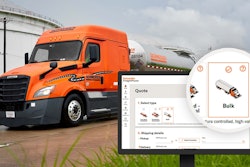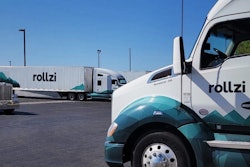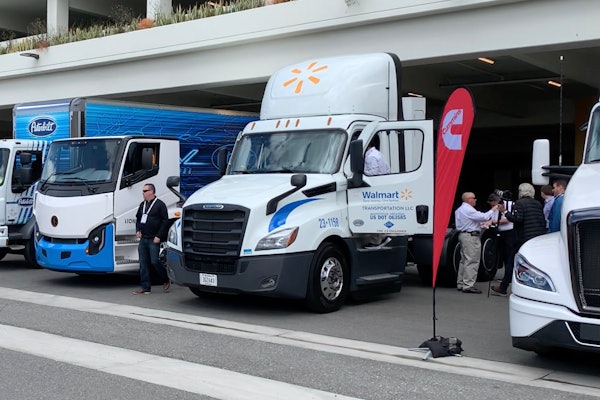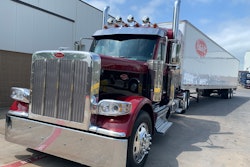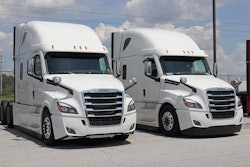CCJ Innovators profiles carriers and fleets that have found innovative ways to overcome trucking’s challenges. If you know a carrier that has displayed innovation, contact CCJ Chief Editor Jason Cannon at jasoncannon@randallreilly.com or 800-633-5953.
The infamous congestion that began last year at the ports of Los Angeles and Long Beach laid bare the supply chain inefficiencies and system-wide turmoil that exist throughout the nation’s marine and inland terminal network.
From a trucking perspective, backups can cause hours of detention time, fewer turns per day and lost revenue. The traditional practice of a drayage truck waiting as a crane sorts through stacks of containers to get a specific load is only exacerbated during times of high volume when containers are often stacked eight high, resulting in more container moves to reach the prescribed one.
The concept of peel piles was introduced in container port operations less than a decade ago to help alleviate wasted time and improve truck utilization. In a peel pile operation, containers from a single shipper or importer are grouped into stacks (or piles), and truck operators simply receive the container on top of the stack and take it to a common inland distribution center for further routing. This process eliminates the need for terminal cranes to move multiple containers just to load one truck.
Peel piles can greatly improve productivity for drayage operations. According to Mason George, IMC Companies’ president of national accounts, peel piles can reduce driver detention by three times and cut dwell time – the time a container sits at a port terminal – from nine days to an average of three days. A driver might make five turns instead of two at the Port of Los Angeles, and seven turns instead of three at an inland terminal like Memphis or Chicago, George said.
The main drawback to peel piles is their limited scope. Only the nation’s largest beneficial cargo owners – think Amazon, Walmart, Home Depot, etc. – can create enough container volume at a port terminal to make peel piles a viable alternative. Containers for smaller volume importers are relegated to the traditional and inefficient terminal operations of the past.
